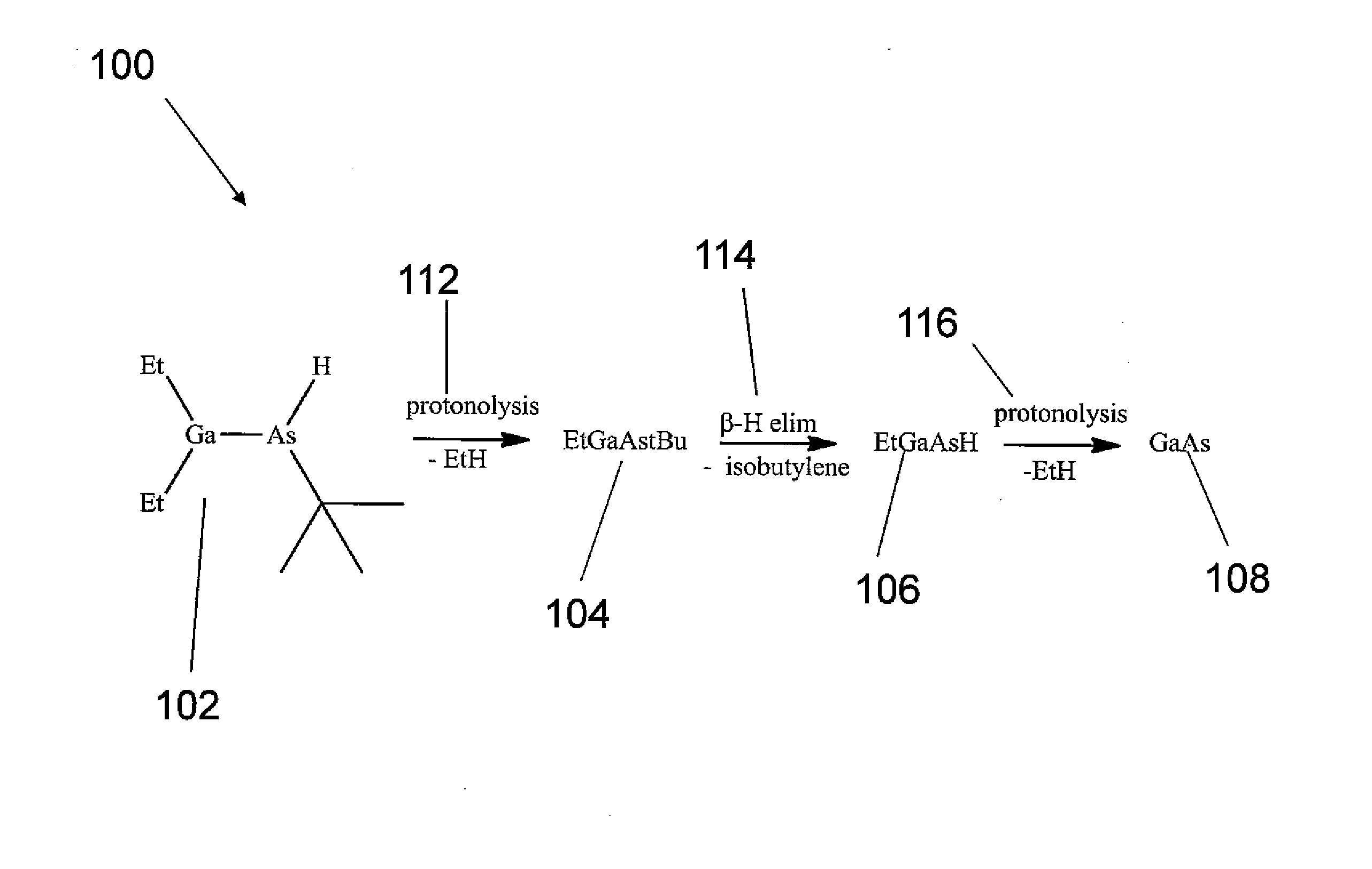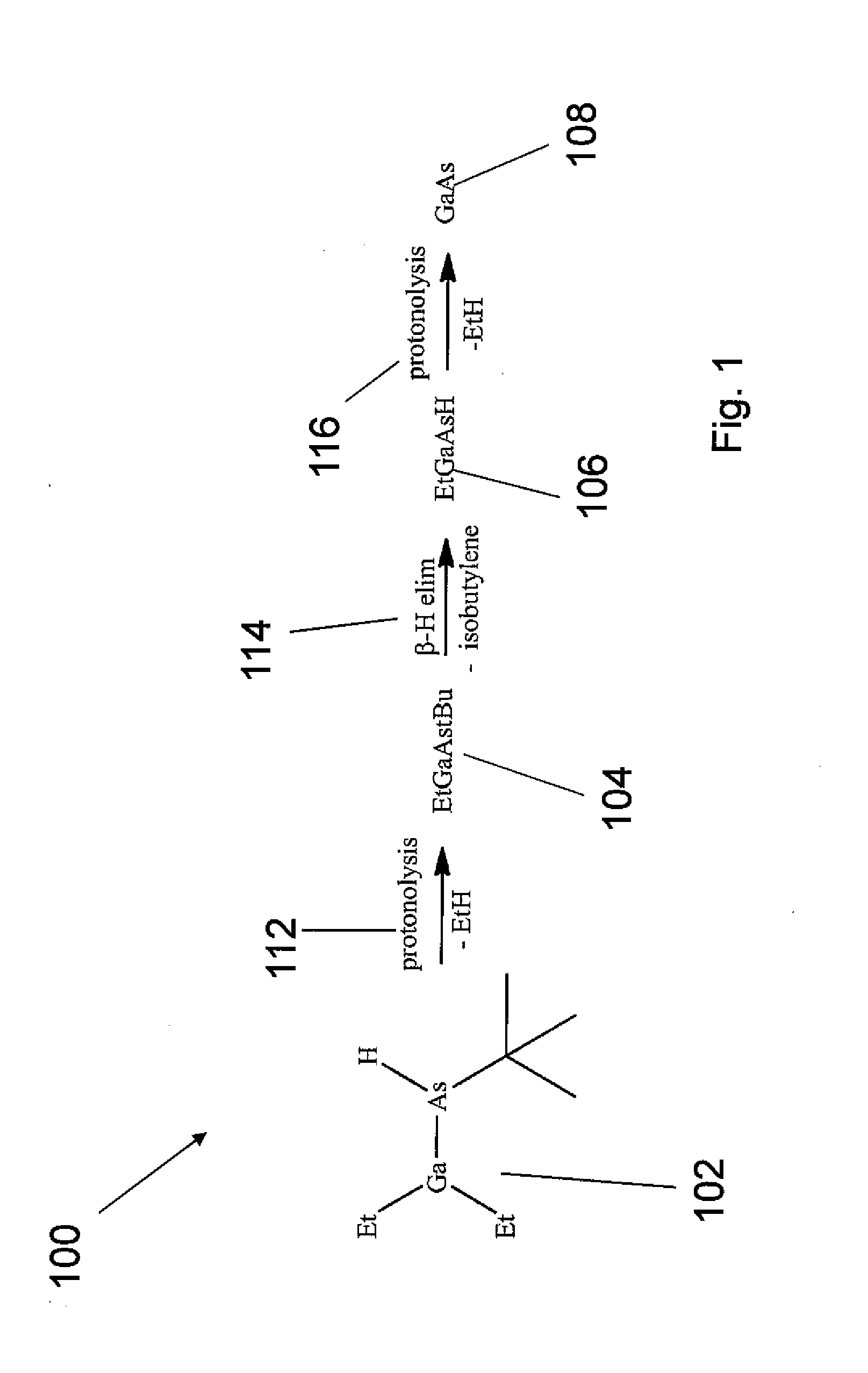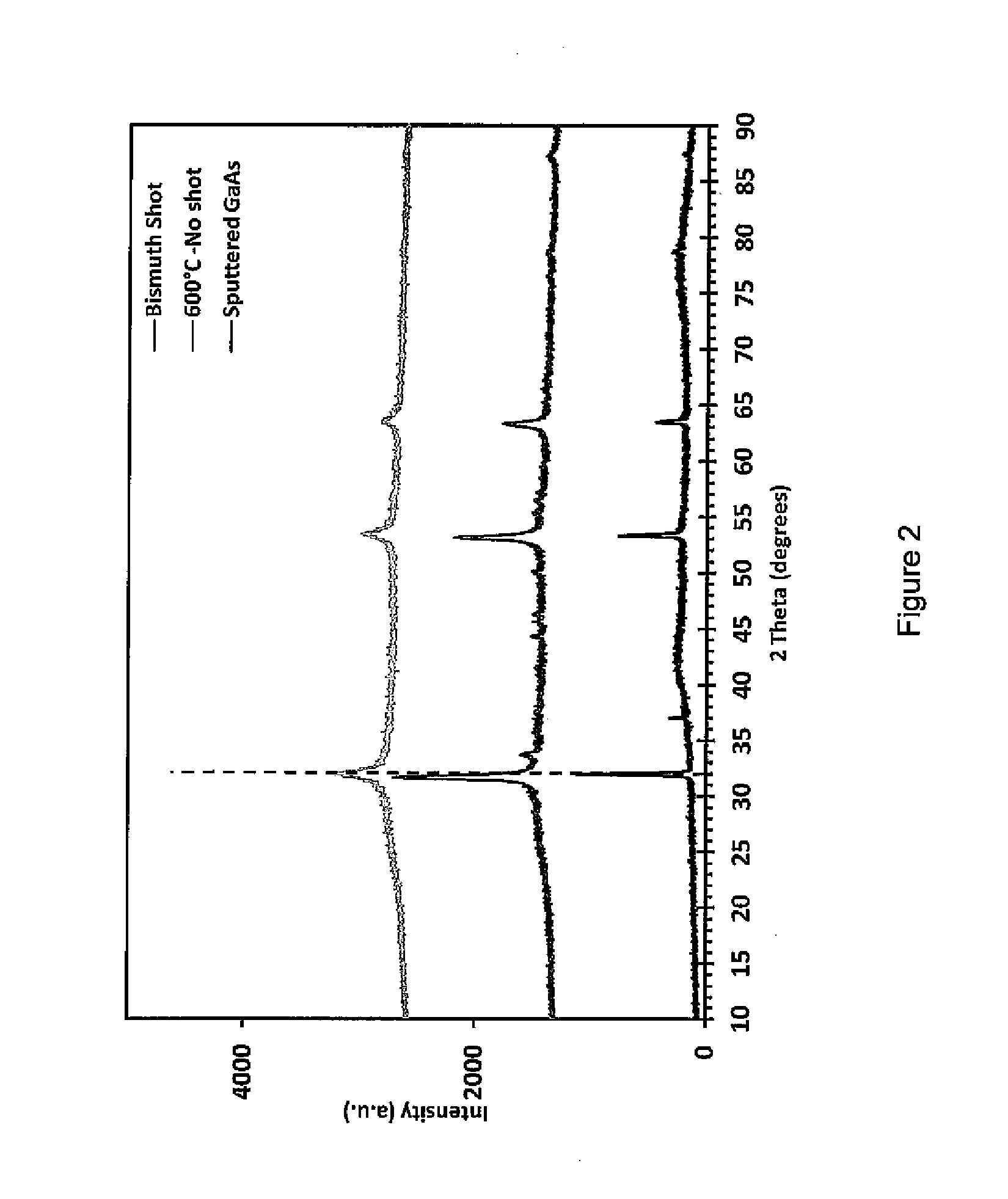Processes for using flux agents to form polycrystalline group iii-group v compounds from single source organometallic precursors
a technology of polycrystalline group iii-group v and flux agent, which is applied in the direction of arsenic compounds, liquid/solution decomposition chemical coatings, electrically-conductive paints, etc., can solve the problems of large grains of stoichiometric gaas, significant problem, waste of mocvd process, etc., and achieves better electronic properties and increase the size of crystalline grains
- Summary
- Abstract
- Description
- Claims
- Application Information
AI Technical Summary
Benefits of technology
Problems solved by technology
Method used
Image
Examples
example 1
Synthesis of [tBu(H)AsGaMe2]n
[0079]A 40 mL vial was charged with tBuAsH2 (134 mg, 1 mmol) and diluted with hexane (15 mL). To the vial, Me3Ga (1 mmol, 115 mg) was added. The mixture was heated to about 70° C. for 24 h. The volatiles were removed under reduced pressure to afford a colorless solid Yield: 211 mg, 90.6%. 1H NMR (400 MHz, C6D6, 25° C.): δ 2.37, (s, As—H, 0.22H), 2.25 (s, As—H, 0.42H), 2.08 (s, As—H, 0.22H), 1.30 (m, As-tBu, 9H), 0.36 (s, Ga-Me, 1.28H), 0.33 (s, Ga-Me, 1.15H), 0.31 (s, Ga-Me, 1.87H), 0.28 (s, Ga-Me, 0.71H). 13C NMR (101 MHz, C6D6, 25° C.): δ 35.75, 35.38, 35.07, 34.07, 33.77, 1.24, 0.45, −1.28, −1.59, −3.10, −3.29.
example 2
Synthesis of [tBu(H)AsGaEt2]n
[0080]A 40 mL vial was charged with tBuAsH2 (134 mg, 1 mmol) and diluted with hexane (15 mL). To the vial, Et3Ga (1 mmol, 156 mg) was added. The mixture was heated to about 70° C. for 24 h. The volatiles were removed under reduced pressure to afford a colorless solid. Yield: 238 mg, 91.5%. 1H NMR (400 MHz, C6D6, 25° C.): δ 2.39, (s, As—H, 0.27H), 2.30 (s, As—H, 0.52H), 2.17 (s, As—H, 0.14H), 1.43 (m, Ga—CH2CH3, 6H), 1.35 (m, As-tBu, 9H), 0.93 (M, Ga—CH2CH3, 4 H). 13C NMR (101 MHz, C6D6, 25° C. 13C NMR) 8 35.40, 35.11, 34.89, 34.36, 34.17, 12.67, 12.52, 12.30, 12.14, 11.81, 11.68, 9.15, 8.63, 8.24, 8.08, 7.38, 7.08.
example 3
Synthesis of {[tBu(H)AsGaEt2]3(tBuAsGaEt)2}
[0081]A 5 mL vial was charged with tBuHAsGaEt2 (0.242 g, 0.9272 mmol) and dissolved in hexane (1 mL). The solution was stored in the dry box for 53 days and it was noticed that colorless crystals appeared. Yield (19%; 44 mg). The crystals were shown to be {[tBuAs(H)GaEt2]3(tBuAsGaEt)2} by X-ray crystallography and NMR spectroscopy. 1H NMR (400 MHz, C6D6, 25° C.): δ 2.9, (s, As—H, 1.03H), 2.87 (s, As—H, 1.00H), 2.55 (s, As—H, 1.05H), 1.50 (m, Ga—CH2CH3, 18H and As-tBu, 18H), 1.38-1.25 (m, Ga—CH2CH3, 6H), 1.38 (s, As-tBu, 9H), 1.35 (s, As-tBu, 9H), 1.27 (s, As-tBu, 9H), 1.25-0.95 (m, Ga—CH2CH3, 16 H).
PUM
| Property | Measurement | Unit |
|---|---|---|
| pressure | aaaaa | aaaaa |
| boiling point | aaaaa | aaaaa |
| melting point | aaaaa | aaaaa |
Abstract
Description
Claims
Application Information
 Login to View More
Login to View More - R&D
- Intellectual Property
- Life Sciences
- Materials
- Tech Scout
- Unparalleled Data Quality
- Higher Quality Content
- 60% Fewer Hallucinations
Browse by: Latest US Patents, China's latest patents, Technical Efficacy Thesaurus, Application Domain, Technology Topic, Popular Technical Reports.
© 2025 PatSnap. All rights reserved.Legal|Privacy policy|Modern Slavery Act Transparency Statement|Sitemap|About US| Contact US: help@patsnap.com



